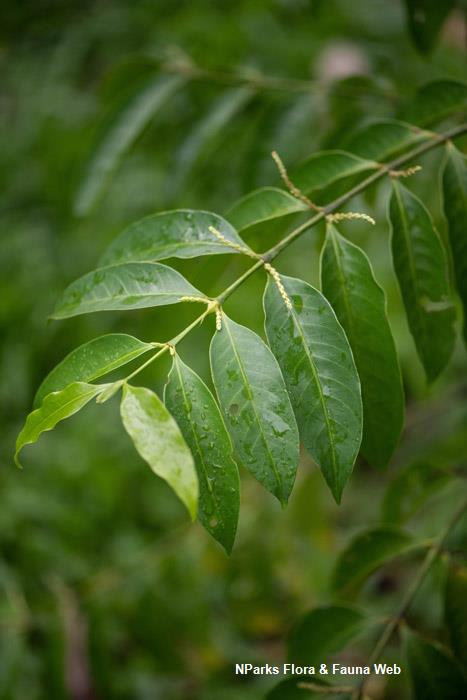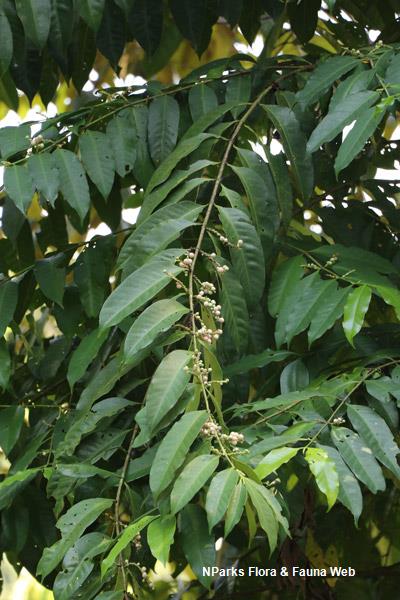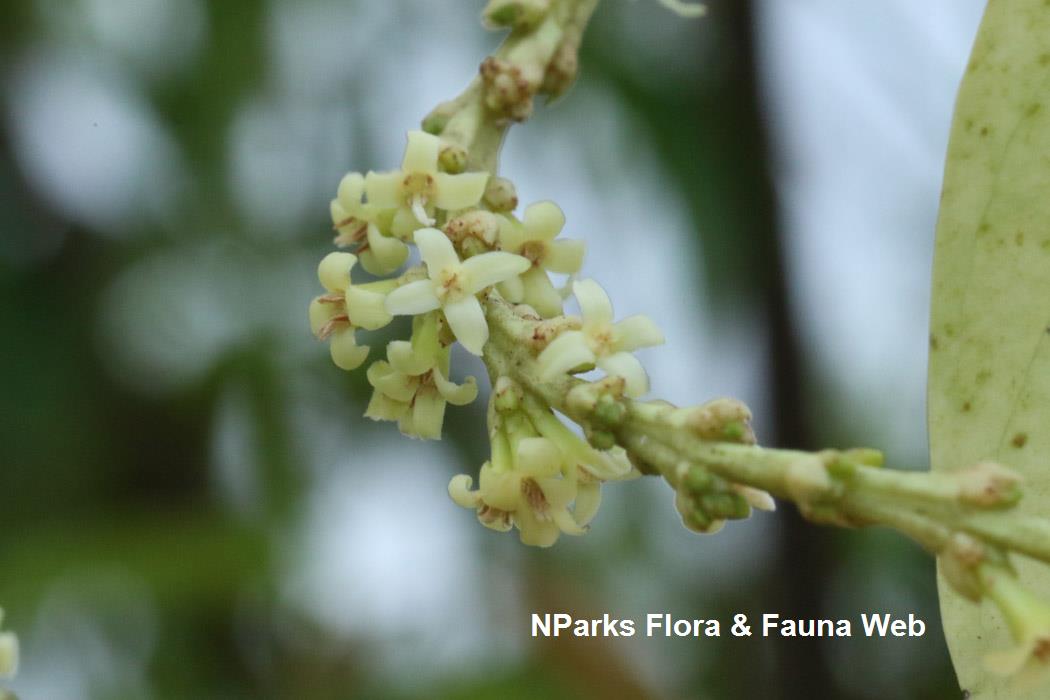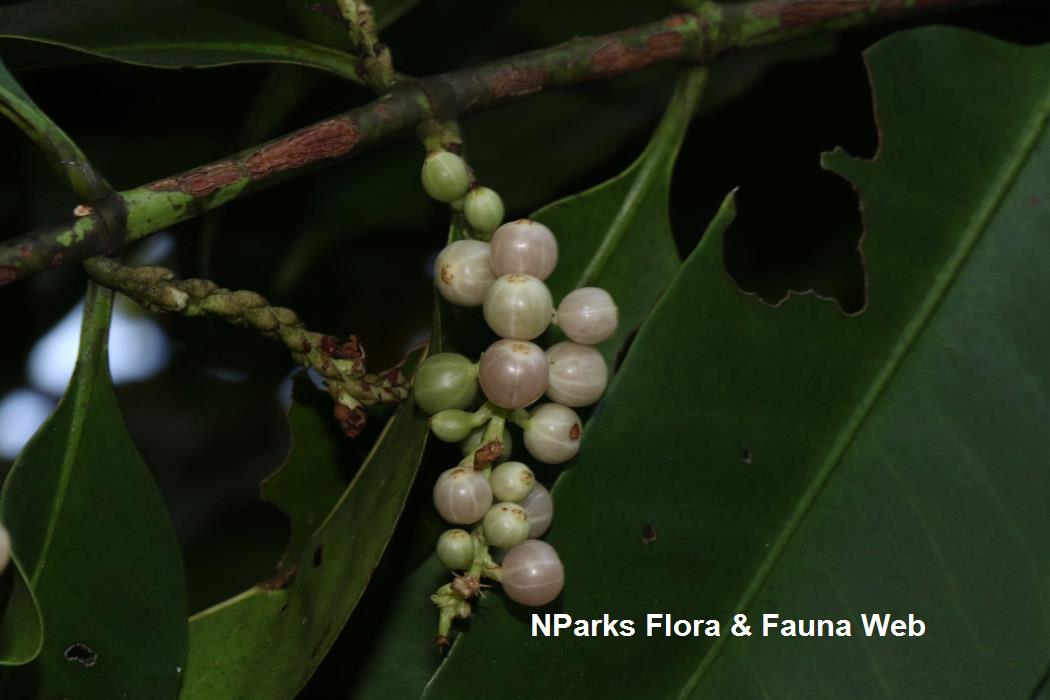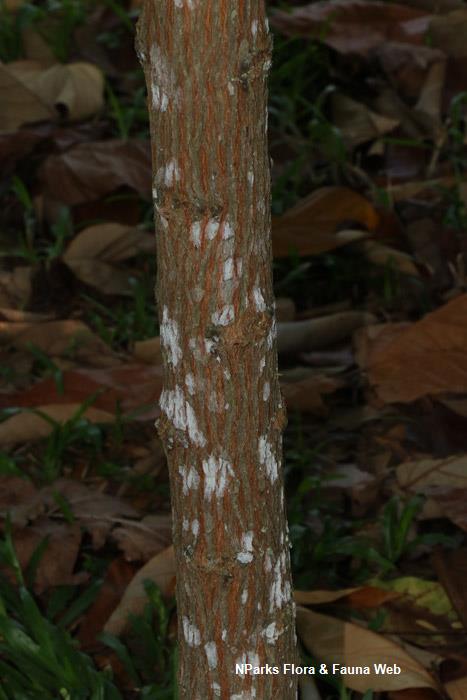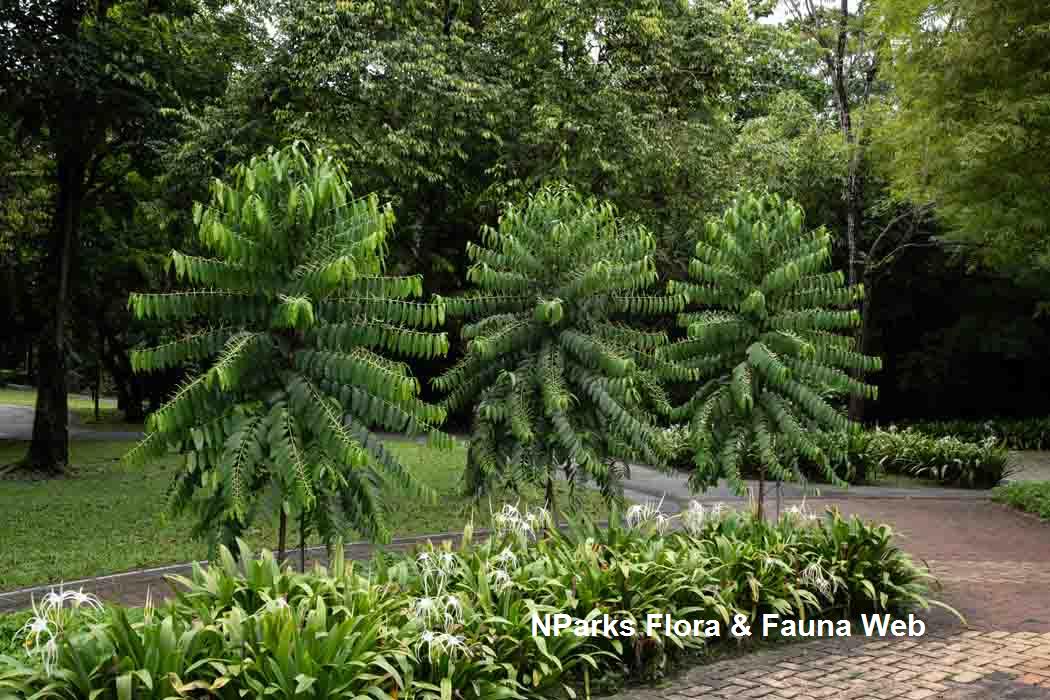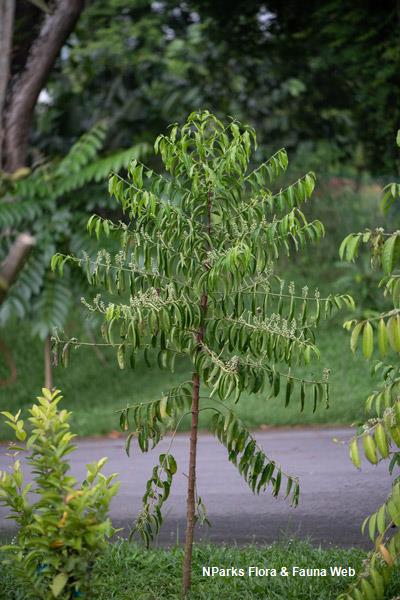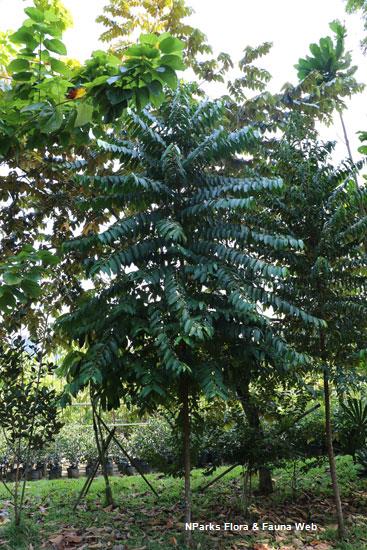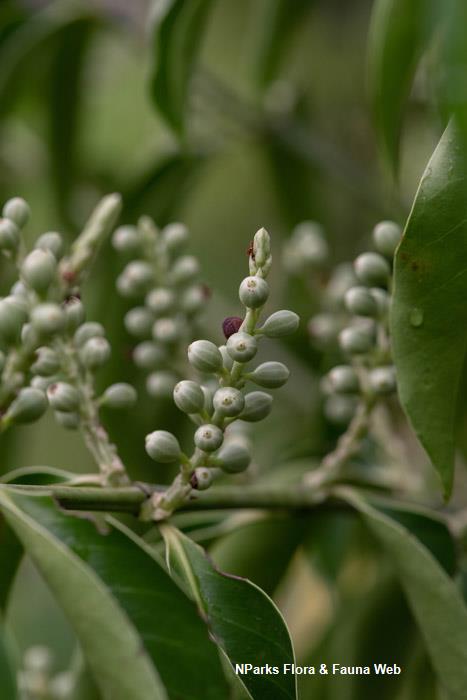
Back
Hypobathrum racemosum (Roxb.) Kurz
| Family Name: | Rubiaceae |
| Synonyms: | Petunga racemosa (Roxb.) K.Schum., Petunga roxburghii DC., Randia racemosa Roxb. |
| Common Name: | Kayu Ekor Gajah, Tulang Betina |
Hypobathrum racemosum , also known as Kayu Ekor Gajah, is a tree with small greenish white flowers and berry-like fruits. Found naturally in secondary rainforests, along the riverbanks and swamp forests, it thrives in cultivation when grown under full sunlight.
Name
Classifications and Characteristics
| Plant Division | Angiosperms (Flowering Seed Plants) |
|---|---|
| Plant Growth Form | Tree |
| Lifespan (in Singapore) | Perennial |
| Mode of Nutrition | Autotrophic |
| Maximum Height | 12 m |
Biogeography
| Native Distribution | From Bangladesh to West Malesia. |
|---|---|
| Native Habitat | Terrestrial |
| Preferred Climate Zone | Tropical |
| Local Conservation Status | Non-native |
Description and Ethnobotany
| Growth Form | It is a tree, up to 12 m tall. |
|---|---|
| Foliage | The leaves are elliptic to lanceolate, measuring 6 – 5 (-20) cm long and 2.5 – 4 cm wide, and in opposite arrangement. Each leaf has 10 – 16 pairs of lateral veins. The leaf tip is tapering while the leaf base is narrow. Stipule occurs between two leaves to form a prominent keel and may fall off early. |
| Flowers | Flowers occur in a cluster, measuring (1.5 –) 3 – 12 cm long. Flowers are small and greenish white coloured. |
| Fruit | The fruit is berry-like (baccate), ellipsoid or globose and measuring 0.6 cm long. Each fruit contains (4 –) 8 – 14 seeds. |
| Habitat | It is found in secondary rainforests, along the riverbanks and swamp forests, up to 600 m altitude. |
| Associated Fauna | It is pollinated by insects. |
| Etymology | The genus epithet comprises of two parts. hypo, in Greek, means under while bathrum, in Greek, means chair, which refers to the ovules in a hypanthium below the other flower parts. The specific epithet, in Latin, refers to the racemose-like inflorescence. |
| Ethnobotanical Uses | Medicinal: <b> Traditional Medicinal Uses </b> In Cambodia, the root is used in traditional medicine as part of a decoction to treat yaws. <2> It is important to note that some therapeutic effects from traditional medicinal uses of plants are not currently supported or verified by scientific research. |
Landscaping Features
| Landscape Uses | Parks & Gardens |
|---|
Fauna, Pollination and Dispersal
| Pollination Method(s) | Biotic (Fauna) |
|---|
Plant Care and Propagation
| Light Preference | Full Sun |
|---|---|
| Water Preference | Moderate Water |
| Plant Growth Rate | Moderate |
Foliar
| Mature Foliage Colour(s) | Green |
|---|---|
| Foliar Type | Simple / Unifoliate |
| Foliar Arrangement Along Stem | Opposite |
| Foliar Attachment to Stem | Petiolate |
| Foliar Shape(s) | Non-Palm Foliage (Elliptical, Lanceolate) |
| Foliar Margin | Entire |
Non - Foliar and Storage
| Trunk Type (Non Palm) | Woody |
|---|---|
| Root Type | Underground |
Floral (Angiosperm)
| Flower & Plant Sexuality | Bisexual Flowers |
| Flower Colour(s) | Cream / Off-White, Green - Light Green |
|---|---|
| Flower Grouping | Cluster / Inflorescence |
| Flower Location | Axillary |
Fruit, Seed and Spore
| Fruit Classification | Simple Fruit |
|---|---|
| Fruit Type | Fleshy Fruit |
| Seed Quantity Per Fruit | Moderate (6-10), Numerous (>20) |
References
| References | <1> Gardner, S., Sidisunthorn, P., & Chayamarit, K. (2018). Forest Trees of Southern Thailand. Volume 3 (Mo – Z). The Forest Herbarium, Bangkok, The Royal Botanic Gardens, Kew. Pp. 1532−2401. Bangkok: Amarin Printing and Publishing Plc. <2> Lemmens, R.H.M.J. and Bunyapraphatsara, N. (Editors). 2003. Plant Resources of South-East Asia Volume 12 (3). Medicinal and poisonous plants 3. Leiden: Prosea Foundation. 664 pages. <3> Mulyaningsih, T., and Ridsdale, C. E. (2002). The Bornean genus Hypobathrum (Rubiaceae). An investigation of its characters and taxonomic status. Reinwardtia 12(1): 95–116. <4> Wong, K.M. (1989). Rubiaceae. In: Ng, F.S.P. (ed.) Tree Flora of Malaya, vol. 4, pp. 324–425. Kuala Lumpur: Longman Malaysia Sdn. Bhd. |
|---|
Image Repository
Others
| Master ID | 34157 |
|---|---|
| Species ID | 8570 |
| Flora Disclaimer | The information in this website has been compiled from reliable sources, such as reference works on medicinal plants. It is not a substitute for medical advice or treatment and NParks does not purport to provide any medical advice. Readers should always consult his/her physician before using or consuming a plant for medicinal purposes. |


